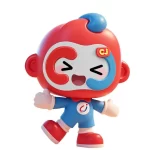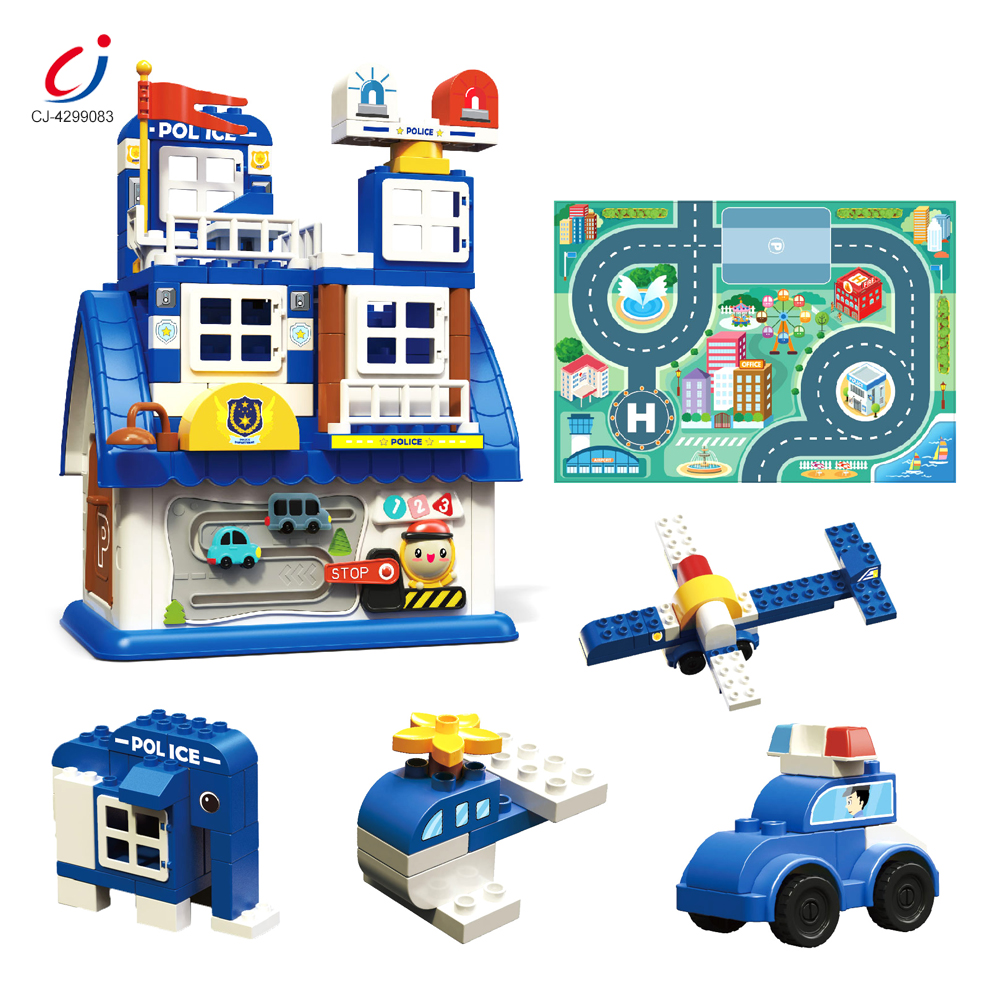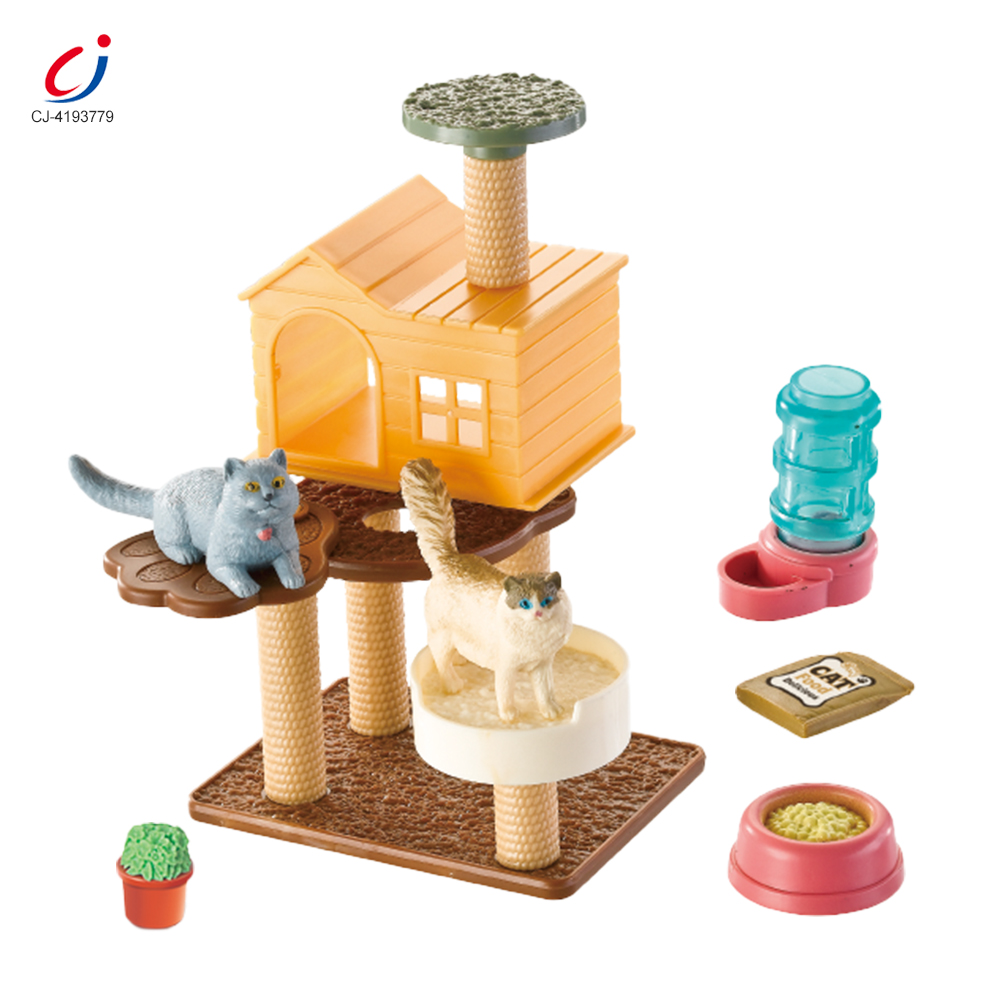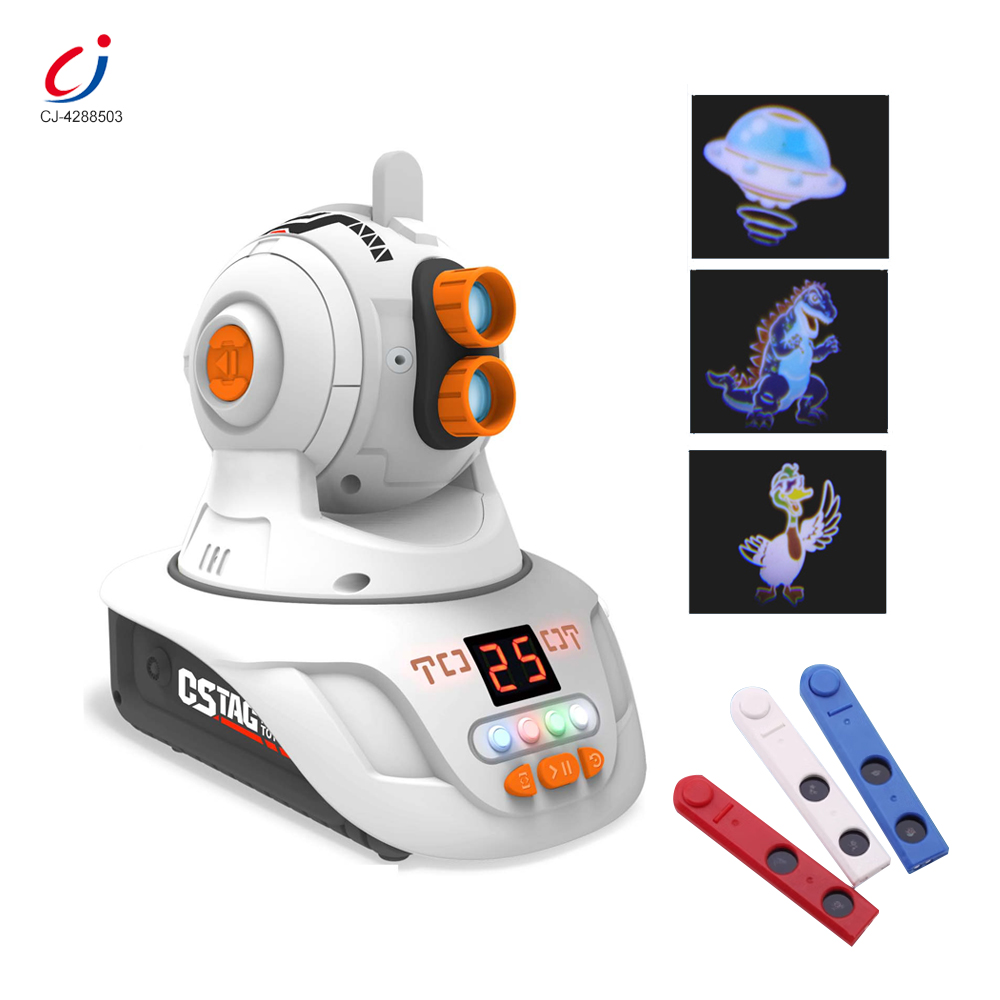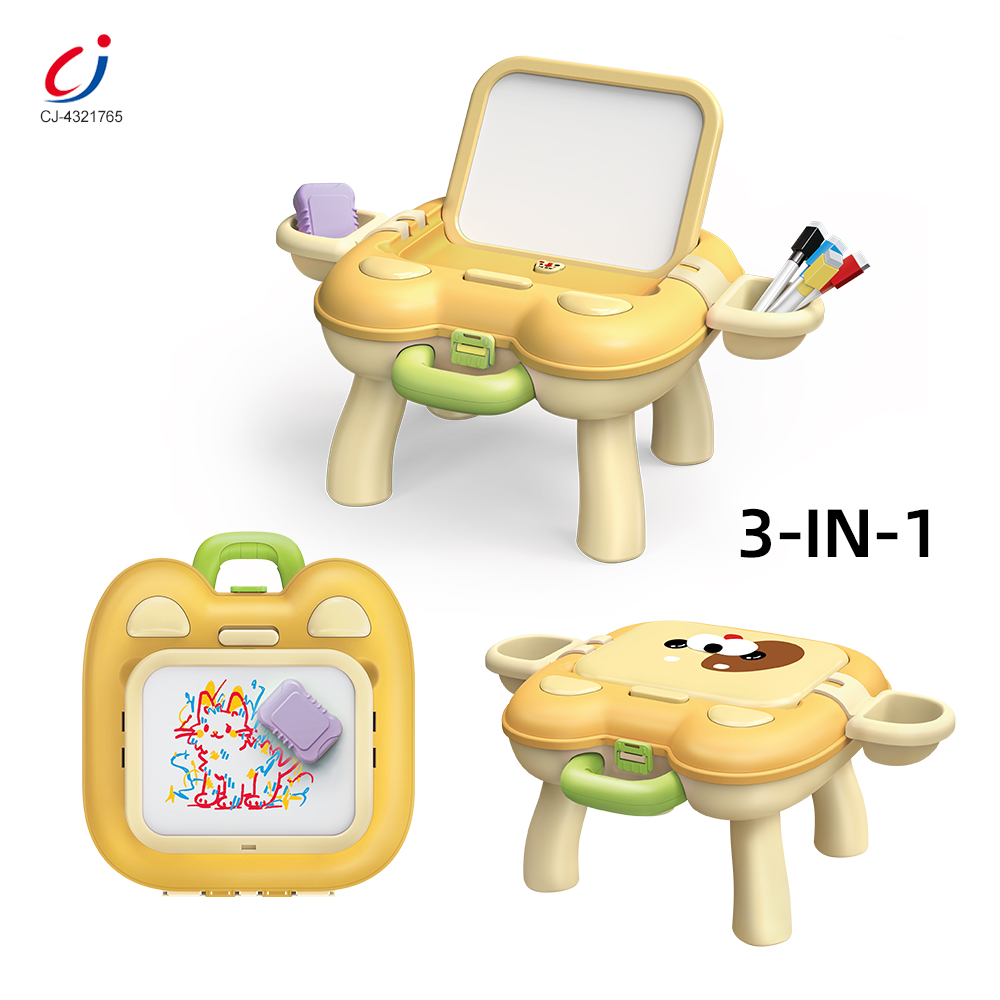Most parents complain that cleaning baby toys feels like a never-ending chore. While it’s a tedious task, neglecting them can create breeding grounds for bacteria and mold, which can harm your baby’s health. As a leading proveedor de juguetes, we recommend keeping toys clean regularly, not only for happier babies but also to reduce parenting stress for parents.
Luckily, properly cleaning baby toys is much easier than you think with a few tips. Let me give you an in-depth look at everything you need to know about cleaning toys, from how often to clean them to cleaning techniques for specific materials.
How Often Should You Clean?
Toys That Should Be Cleaned Daily
Daily Cleaning: Toys that are often placed in the mouth area—such as teethers, pacifier holders, or stuffed animals that babies cuddle to sleep—are often covered in saliva. The moist environment of saliva is a perfect breeding ground for bacteria and mold, which can grow quietly overnight if not cleaned promptly. To ensure your baby’s health, wash these toys at least daily with warm water and a safe detergent, or sterilize them regularly by steaming, boiling, or using a dishwasher.
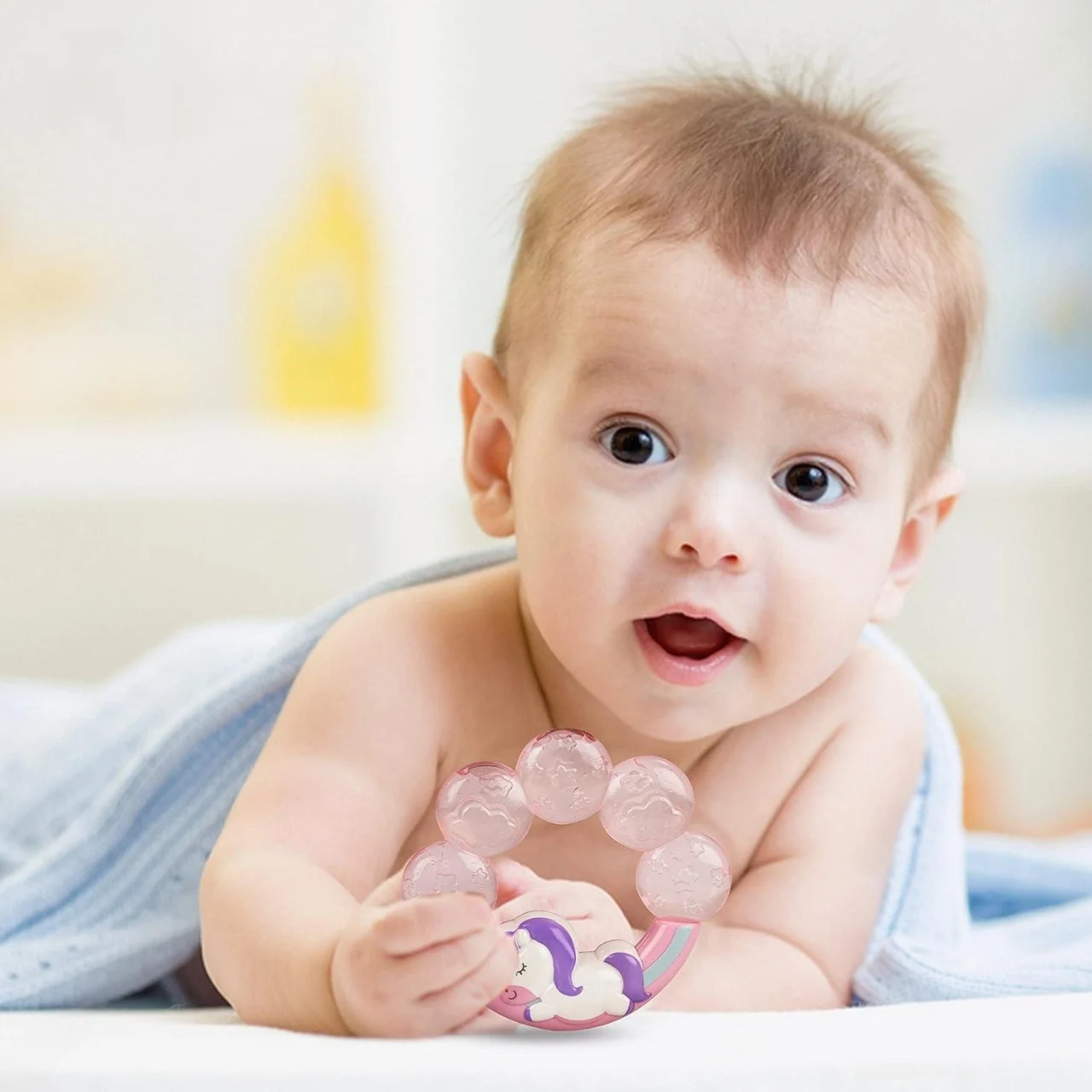
Toys That Should Be Cleaned Weekly
Even if babies don’t often put toys like building blocks, toy cars, or delicate wooden puzzles in their mouths, dust, sweat, and food residue can accumulate on their surfaces. If left uncleaned for extended periods, these toys can easily become breeding grounds for bacteria and mold.
Therefore, it’s recommended to thoroughly clean these toys weekly. Keeping them clean not only keeps them hygienic but also makes them last longer, allowing children to enjoy playing with them for longer.
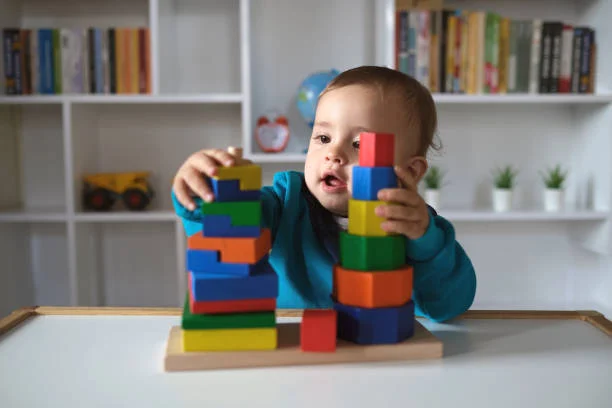
Toys That Need to Be Cleaned Immediately
After the Child Is Sick
If your child has a cold, fever, or any infectious disease, there is a high probability that germs may remain on the toys he has played with. In this case, in order to prevent the spread of germs to other children or reinfection, all toys he has touched need to be thoroughly disinfected immediately.
Toys Are Stained with Dirt
When toys are dropped on the ground or soiled by food, stains, dirt, etc., they need to be cleaned immediately. Especially those toys that children will put in their mouths should be cleaned in time to prevent germs and chemicals from being ingested.
Toys Played with in Public
If children take toys to public places such as parks, playgrounds or hospitals, the toys will be exposed to a large number of bacteria and viruses. The toys should be cleaned and disinfected immediately after returning home to protect the health of children.
New or Second-hand Toys
New toys can pick up dust and bacteria during transportation and storage. Second-hand toys are even more complicated, as they may have been played with by multiple children. They should be thoroughly cleaned and disinfected before use.
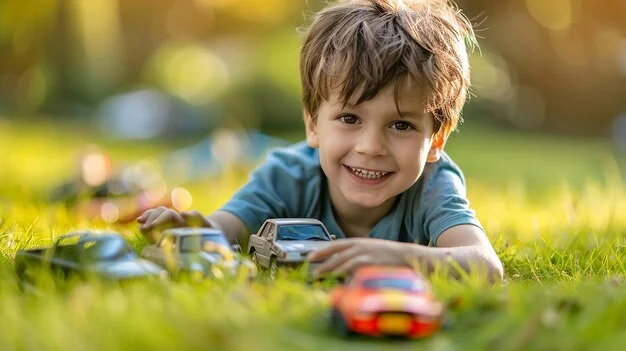
Clean Toys Safely
Safety is paramount when cleaning toys. Using the right cleaning methods and products will not only ensure the toys are clean, but also keep your child safe. However, using the wrong cleaning products or the wrong methods can pose a safety hazard. Here are some things not to do:
Harsh chemicals: While many household cleaners (such as bleach, ammonia, and strong disinfectants) are effective, they contain irritating chemicals. If these substances remain on toys, children may ingest them through skin contact or mouthfuls while playing, leading to skin allergies, respiratory irritation, or even poisoning.
Soaking porous toys: The materials used in these toys make it difficult for moisture to completely evaporate once it seeps in. Even if the surface appears dry, the interior may still be damp. This damp, dark environment is ideal for mold growth.
Improper high-temperature disinfection: Certain toys aren’t heat-resistant. For example, some plastic toys can deform or even release harmful chemicals like bisphenol A (BPA) when exposed to high temperatures. Therefore, when choosing a high-temperature sterilization method (such as boiling water or using a steam sterilizer), be sure to confirm the toy’s heat-resistant material.
In short, when cleaning toys, avoid using harsh chemicals, choose detergents with mild ingredients designed specifically for children’s products, ensure thorough rinsing, and choose a cleaning method suitable for the material of the toy to ensure the safety of children.
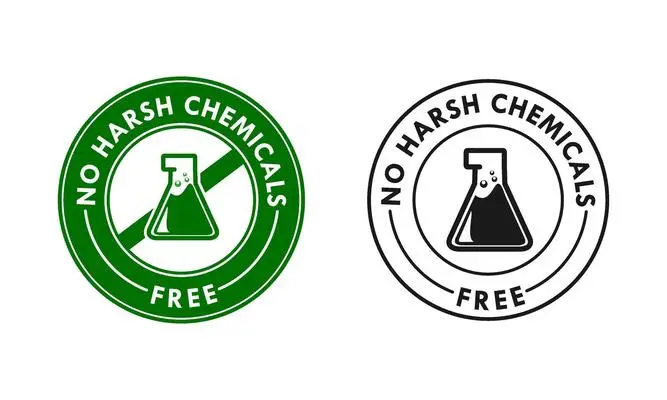
Cleaning Methods for Toys of Different Materials
Not all toys are plastic. Common toy materials include plastic, wood, metal, resin, rubber, and silicone. Furthermore, not all cleaning agents are suitable for all materials. Here’s how to choose the right cleaning method for your toy:
Cleaning Methods for Plastic Toys
Plastic toys are relatively easy to clean and maintain. For daily cleaning, use warm water and a mild dish soap. This effectively removes stains, is safe for your baby, and is inexpensive. For stubborn stains, soak the toy in a mild detergent for 10–15 minutes, then rinse thoroughly.
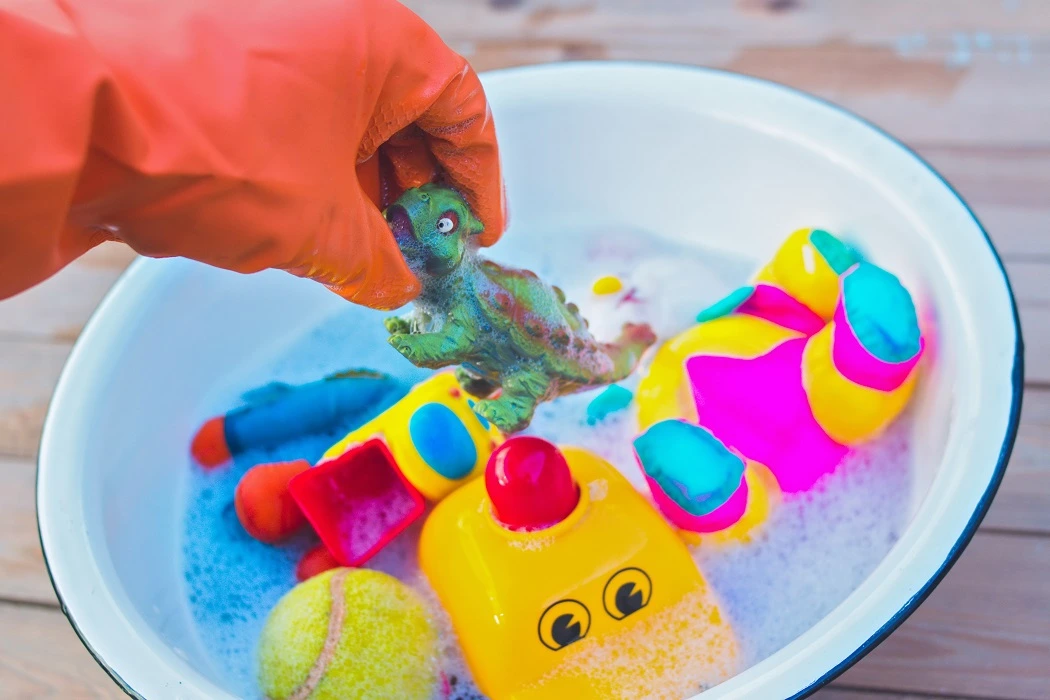
Cleaning Methods for Rubber & Silicone Toys
For durable, non-porous rubber and silicone toys, daily cleaning is simple: wash with mild soap and water, rinse thoroughly with clean water, and then hang them upside down to dry to prevent water from collecting. Toys labeled “heat-resistant,” such as teethers, can be deep-sterilized by boiling them in water for 5 minutes, but be sure to check the label first to ensure the toy’s material is heat-resistant.
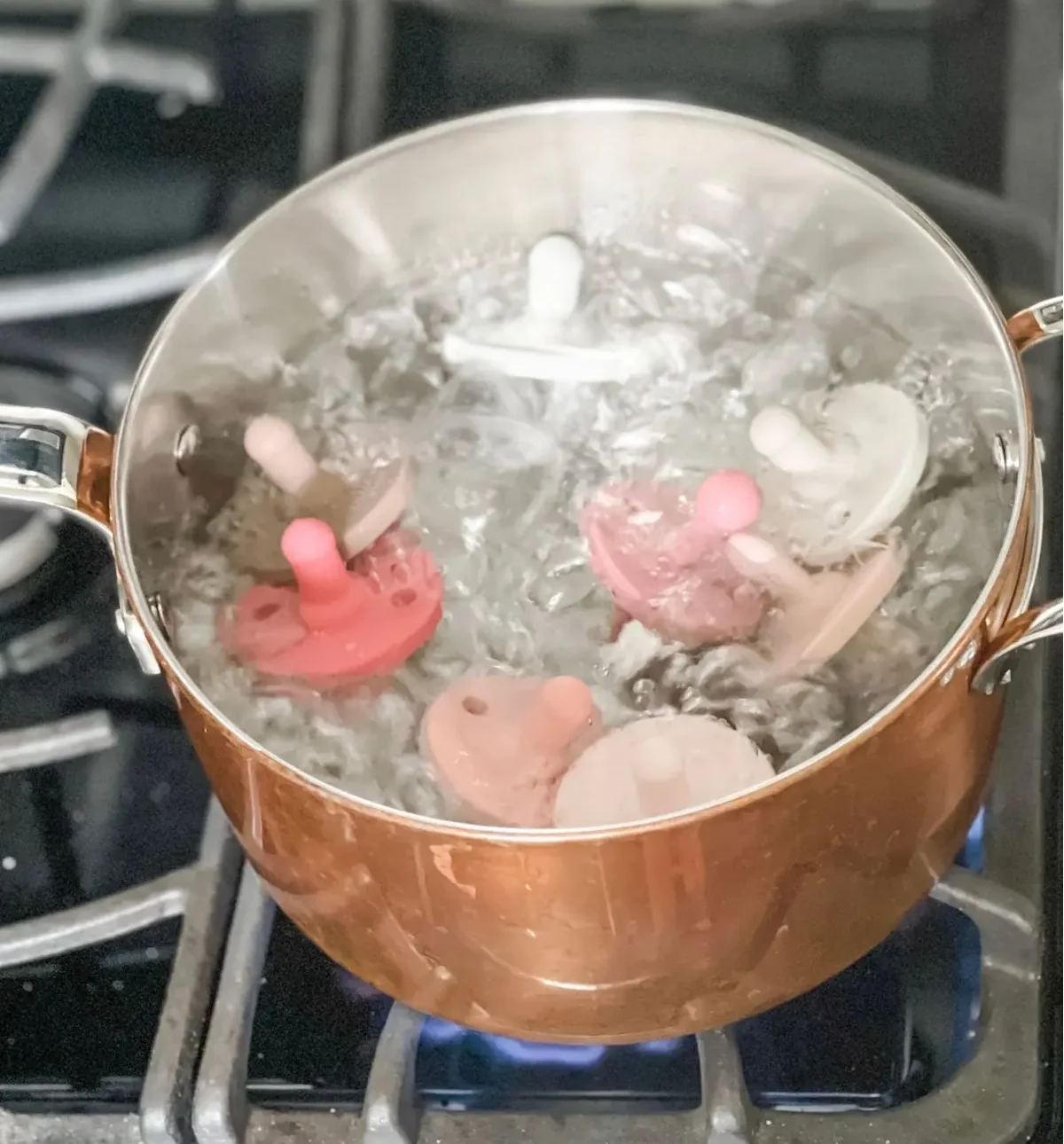
Cleaning Methods for Plush & Fabric Toys
While these toys are cute, they can easily harbor dust mites, debris, and noticeable stains. Machine wash them in cold water on the gentle cycle. Place them in a laundry bag to protect the stuffing and buttons. Use baby detergent, preferably unscented, as scented products can irritate sensitive skin. Finally, air dry them in a well-ventilated area.
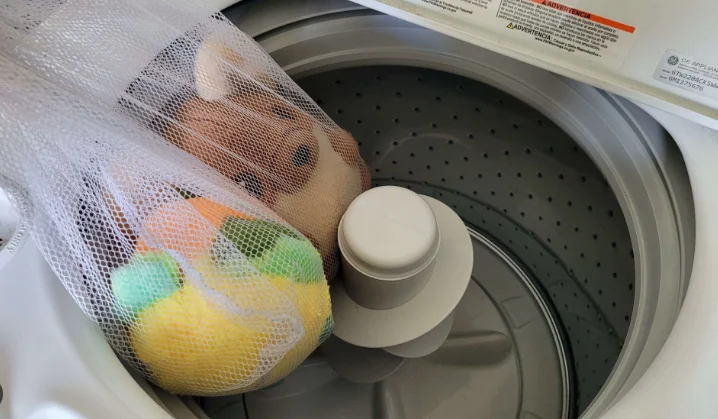
Juguetes de madera:
Wood is the “elegant elder” of toys—natural, durable, but water-averse. Wipe with a damp cloth and mild soap. Wring the cloth out first—wood expands when wet, and warping is irreversible. Never submerge wooden toys—they’re not waterproof, and prolonged moisture will ruin the finish and the wood itself.
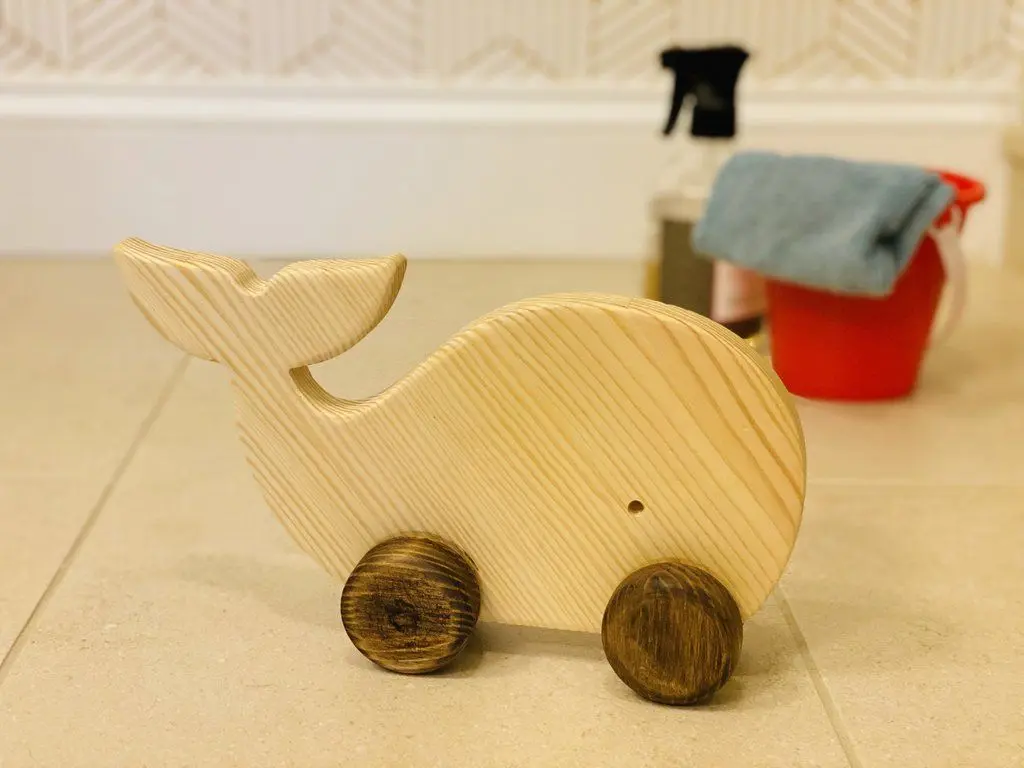
Safe Ways to Disinfect Baby Toys
Cleaning removes dirt; disinfecting kills germs. For high-risk toys, you need both.
Vinegar solution: Mix 1 part white vinegar with 1 part water. It’s natural, non-toxic, and kills most bacteria. Wipe, rinse, dry.
Hydrogen peroxide (3%): Spray on, let sit 5 minutes, then wipe. Safe for plastic, rubber, and silicone.
Diluted bleach: The experts recommended 1/3 cup bleach per gallon of water. Use sparingly, rinse extremely well. And never mix with vinegar because it will generate toxic fumes.
- Warning: Avoid “miracle” cleaners with unknown ingredients. If it’s not baby-safe, it’s not worth the risk.
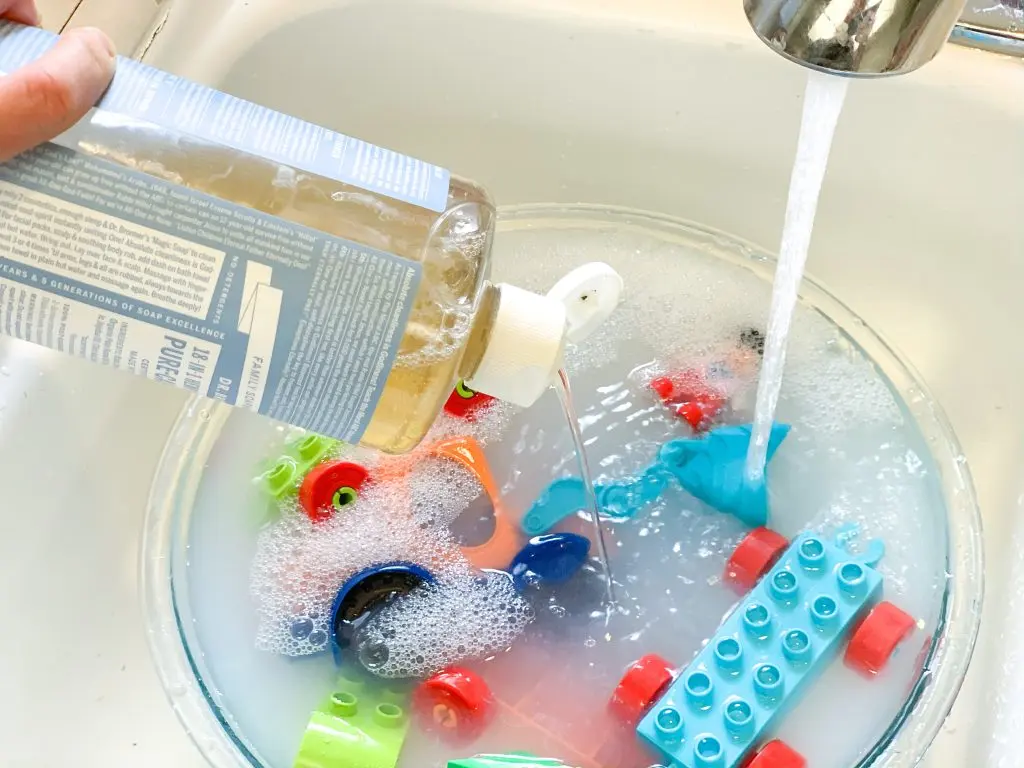
Mold Prevention
Washing toys is meant to remove dirt and bacteria, but if done improperly, moisture can become a breeding ground for mold. When toys made of cloth, wood, or with small crevices aren’t completely dried after washing, residual moisture can seep inside, creating a warm, moist environment ideal for mold spores.
To help you effectively prevent toys from getting moldy, I have compiled a series of simple and practical methods covering three aspects: cleaning, storage and daily maintenance.
Regular and Thorough Cleaning and Disinfection
Regularly and thoroughly cleaning and disinfecting toys is the first step to preventing mold. Use appropriate cleaning methods for different types of toys. For example, cloth and plush toys should be washed with a mild detergent. After washing, be sure to dry thoroughly in the sun or in a dryer. Wooden toys are better wiped with a clean, damp cloth and then left to air dry in a well-ventilated area.
Ensure the Correct Storage Environment
Keeping toys in a dry and ventilated storage environment is key to preventing mold. Before storing toys, make sure they are 100% dry, as any remaining moisture is a breeding ground for mold.
Daily Maintenance
In addition to regular cleaning and proper storage, developing some good daily habits can also effectively prevent toys from getting moldy. Parents should diligently check toys that are not often used. If any signs of moisture or mold are found, they should be cleaned and dried immediately.
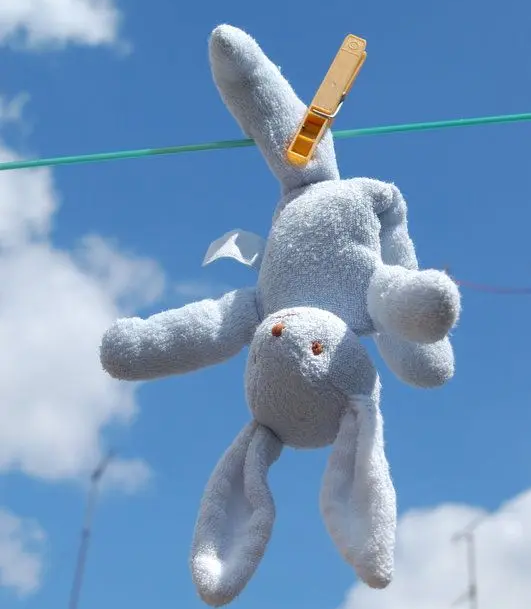
Conclusión
Let’s recap: Clean toys regularly, match the method to the material, avoid harsh chemicals, and store them smartly.But even the best toy can’t fight germs alone. By taking a few minutes each week to clean, you’re not just protecting your baby—you’re extending the life of their favorite playthings
After all, what’s better than seeing your baby giggle with joy? Seeing them giggle y stay healthy. And that starts with clean toys. You’ve got this, parents.
Acerca de Chengji Toy Supplier

Welcome to Chengji. We are a professional proveedor de juguetes from China, with a team with many years of experience, focusing on every detail of the manufacturing industry.
We offer wholesale baby toys, carrying a wide selection of high-quality, safe, and durable baby and toddler toys. Our products comply with international safety standards, making us an ideal choice for retailers and wholesalers seeking a reliable supplier.
We not only bring you products, but also a partner who can solve problems and create value for you, offering OEM/ODM custom toys services. Contact us now and let us achieve greater possibilities together!

